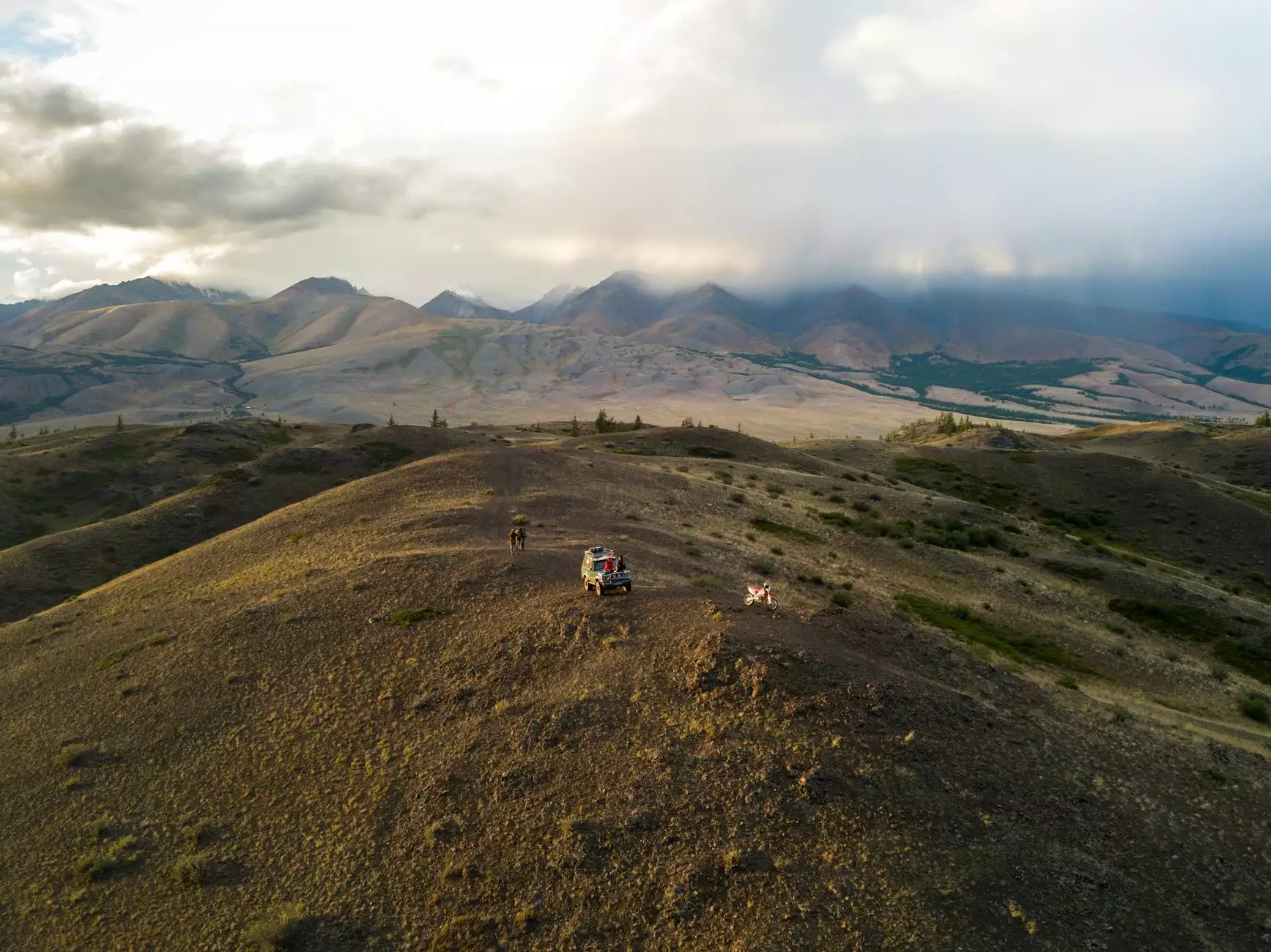Understanding Lift Kits: The Ultimate Guide for Off-Road Enthusiasts

For off-road enthusiasts and automotive lovers alike, enhancing your vehicle's performance not only brings aesthetic improvements but also profoundly enhances functionality. One of the most popular ways to achieve this is through the installation of a lift kit. In this comprehensive guide, we will explore what a lift kit is, the various types available, its numerous benefits, and essential tips for installation. By the end of this article, you'll have a deeper understanding of lift kits and how they can transform your vehicle into an off-road powerhouse.
What is a Lift Kit?
A lift kit is an aftermarket component designed to increase a vehicle's ground clearance. By raising the body of the vehicle higher above the axles, lift kits allow for larger tires, improved off-road capability, and enhanced visual appearance. The installation of a lift kit can significantly change your vehicle's stance, giving it a more aggressive look and providing better off-road performance.
Types of Lift Kits
When it comes to lift kits, there are several different types, each catering to specific needs and applications. Below are the primary styles:
1. Body Lift Kits
Body lift kits raise the body of the vehicle away from the frame using spacers. This type of lift typically provides a modest increase in height—usually 1 to 3 inches—and is often used to fit larger tires without altering suspension geometry. They are generally less expensive and easier to install than suspension lift kits.
2. Suspension Lift Kits
Suspension lift kits involve altering the vehicle's suspension system, either through the installation of new, taller components or through modifications to existing parts. These kits can offer substantial height increases, often ranging from 2 inches up to 12 inches. Suspension lifts not only raise the body, but they also improve wheel travel and articulation, which significantly enhances off-road performance.
3. Leveling Kits
Leveling kits are specifically designed to raise the front of a vehicle to match the height of the rear. Many trucks and SUVs come with a factory rake (where the front is lower than the back), which can affect their aesthetics and handling. Leveling kits typically provide a lift ranging from 1 to 2.5 inches, making them an excellent choice for those who want a slight elevation without a full lift kit.
4. Performance Lift Kits
Performance lift kits combine both the body and suspension lift features and include advanced components designed for those seeking enhanced driving dynamics and performance characteristics. These kits often include high-quality shocks, struts, and other suspension components tailored for rugged off-road conditions.
Benefits of Installing a Lift Kit
Investing in a lift kit can profoundly impact your vehicle's performance and aesthetics. Here are some key benefits:
- Improved Off-Road Capability: A lift kit allows for larger tires which increases ground clearance and approach/departure angles, enabling better navigation of rough terrains.
- Enhanced Performance: Improved suspension geometry can lead to better handling, more stability, and superior traction while off-roading.
- Increased Visibility: Raising your vehicle provides better visibility on the road, making it easier to see over traffic and obstacles.
- Customizable Appearance: Lift kits transform the aesthetics of your vehicle, giving it an aggressive and rugged look, personalized to your liking.
- Increased Flexibility: With a lift kit, you can customize your vehicle further with modifications to other components such as tires and bumpers.
How to Choose the Right Lift Kit?
Selecting the right lift kit can be overwhelming given the multitude of options available. However, focusing on some key elements can simplify your decision-making process:
1. Determine Your Off-Road Needs
Consider how you plan to use your vehicle. Do you anticipate tackling challenging trails, or will your needs be more modest? Understanding your intended usage will guide you toward the appropriate lift style and height.
2. Research Compatibility
Not all lift kits are compatible with every vehicle. Ensure you choose a kit specifically designed for your make and model. Refer to manufacturer specifications and customer reviews to verify compatibility and reliability.
3. Inspect Quality and Materials
The quality of the materials used in a lift kit can significantly affect its performance and longevity. Look for kits that use durable materials such as high-grade steel or aluminum, which can withstand the rigors of off-road driving.
4. Installation Considerations
Some lift kits require professional installation due to the complexity of modifications needed. Others might be easier for do-it-yourselfers. Evaluate your mechanical skill level before purchasing. If you're unsure, it’s often best to get help from a professional mechanic.
Installation Process for Lift Kits
The installation of a lift kit can vary greatly depending on the type selected and the complexity of modifications required. Here’s a general overview of the process:
1. Gather Tools and Equipment
Before starting, ensure you have all necessary tools, including a floor jack, jack stands, wrenches, and special tools specified by the kit manufacturer.
2. Prepare the Vehicle
Begin by securely lifting the vehicle with the floor jack and placing jack stands underneath for safety. Remove the tires to allow access to the suspension system.
3. Install Components
Follow the manufacturer's instructions closely. For suspension lift kits, this may involve installing new springs or spacers, shock absorbers, and other suspension parts. For body lifts, you will be replacing or adding spacers between the body and frame.
4. Reassemble and Align
Reattach the tires and lower the vehicle back onto the ground. After installation, a wheel alignment is strongly recommended to ensure proper handling and tire wear.
Maintenance Tips After Installation
After installing a lift kit, it is essential to maintain both the lift system and your vehicle's overall condition:
- Regular Inspection: Periodically check suspension components, bolts, and spacers for signs of wear or loosening.
- Monitor Alignment: After lifting, it's common for alignment settings to drift. Regularly check and adjust alignment as needed.
- Watch for Wear on Tires: Larger tires can cause uneven wear patterns if not aligned correctly, so keep an eye on tire conditions.
- Listen for Noises: Unusual sounds during driving can indicate problems with suspension or installation. Investigate any anomalies promptly.
Conclusion: Elevate Your Off-Road Experience
In conclusion, installing a lift kit is one of the most effective ways to enhance your vehicle's performance and appearance. From increased off-road capability to a bold new look, the benefits are undeniable. Whether you are a seasoned off-roader or just getting started, understanding lift kits will help you make informed decisions that will elevate your adventure.
At offroad-zone.com, we are committed to helping you find the perfect lift kit for your needs. Explore our extensive range of automotive products, auto parts, and repair services to ensure your off-road vehicle is equipped to conquer any challenge!



